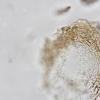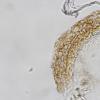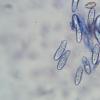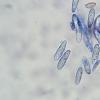
09-01-2026 17:41
Arnold BüschlenHallo, F. dilatata wird von vielen Bryoparasiten

09-01-2026 10:08
 Blasco Rafael
Blasco Rafael
Hola, en el mismo habitat que la anteriorRetamaDia

08-01-2026 21:22
 Blasco Rafael
Blasco Rafael
Hola, He recogido esta muestra de Orbilia sobre Re

07-01-2026 10:24
 Danny Newman
Danny Newman
Pezicula sp. on indet. hardwood Appalachian Highl

07-01-2026 22:22
 Danny Newman
Danny Newman
Tatraea sp. on indet. hardwood The Swag, Great Sm

07-01-2026 17:29
 Marc Detollenaere
Marc Detollenaere
Dear Forum,On a barkless Populus I found some smal

10-11-2021 17:33
 Riet van Oosten
Riet van Oosten
Add-on topic http://www.ascofrance.com/forum/7059

07-01-2026 10:05
 Danny Newman
Danny Newman
cf. Chaetospermum on XylariaCosby Campground, Grea

02-01-2026 17:43
MARICEL PATINOHi there, although I couldn't see the fruitbody, I
Hydropisphaera sp. on wood
Thorben Hülsewig,
07-01-2023 22:54
last year (22.10.22) i found on a branch this presumed Hydropisphaera.
My first idea was H. arenula, but this species has striate spores and my finding has warts.
I couldn't find hairs on the perithecia.
Any idea what this could be ?
best regards,
Thorben
Alain GARDIENNET,
08-01-2023 08:13
Re : Hydropisphaera sp. on wood
Hi Thorben ,
Your request can only make us think back to Christian who had spent some time studying Hydropisphaera. No doubt he would have had an opinion on your quest. He left us exactly one year ago, you give us the opportunity to think of him.
I don't know if there are any mycologists today who study these Bionectriaceae. But there is no doubt that this collection deserves to be studied more closely. Knowing its anamorph would be useful (and molecular data, in a second time). In the meantime you can make a complete description, and in particular clarify some important points in this genus: are the ascomata completely glabrous, smooth ? or do they have hairs ? I advise you to show spore's ornamentation in the lactic cotton blue. A vertical section through lateral ascomata wall is helpful... (tha attached paper is a good model)
It's not excluded that this Hydropisphaera could be unpublished. The closest species is perhaps H. rufofusca, a species known from Indonesia. I don't know this one ,of course, and yours seems to be different.
Best wishes,
Your request can only make us think back to Christian who had spent some time studying Hydropisphaera. No doubt he would have had an opinion on your quest. He left us exactly one year ago, you give us the opportunity to think of him.
I don't know if there are any mycologists today who study these Bionectriaceae. But there is no doubt that this collection deserves to be studied more closely. Knowing its anamorph would be useful (and molecular data, in a second time). In the meantime you can make a complete description, and in particular clarify some important points in this genus: are the ascomata completely glabrous, smooth ? or do they have hairs ? I advise you to show spore's ornamentation in the lactic cotton blue. A vertical section through lateral ascomata wall is helpful... (tha attached paper is a good model)
It's not excluded that this Hydropisphaera could be unpublished. The closest species is perhaps H. rufofusca, a species known from Indonesia. I don't know this one ,of course, and yours seems to be different.
Best wishes,
Alain
Alain GARDIENNET,
08-01-2023 08:20
Re : Hydropisphaera sp. on wood
Another comparison suggested : H. boothii. Seems to be different, too (cf setae).
Thorben Hülsewig,
09-01-2023 20:12
Re : Hydropisphaera sp. on wood
Hi Alain,
Every time I see some Nectriaceae-like mushrooms, I have to think of Christian.
He is undoubtedly missed, not only because of his expertise, but also as a helpful and friendly person.
Unfortunately, I was not allowed to meet him personally.
I have check the ascomata again and can't find any hairs.
In lactic cotton blue it's difficult to see any ornamentation, but there are some warts or spines.
You can see it good at the end of the spores.
But no matter what I do, I can't reproduce an ornament on the surface.
I hope my new pictures can help.
best regards,
Thorben
Every time I see some Nectriaceae-like mushrooms, I have to think of Christian.
He is undoubtedly missed, not only because of his expertise, but also as a helpful and friendly person.
Unfortunately, I was not allowed to meet him personally.
I have check the ascomata again and can't find any hairs.
In lactic cotton blue it's difficult to see any ornamentation, but there are some warts or spines.
You can see it good at the end of the spores.
But no matter what I do, I can't reproduce an ornament on the surface.
I hope my new pictures can help.
best regards,
Thorben

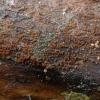
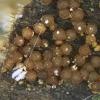
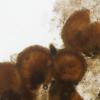
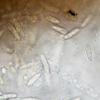
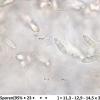
 Three-new-species-of-Hydropisphaera-AscomyceteOrg-12-02-39-46-1--0001.pdf
Three-new-species-of-Hydropisphaera-AscomyceteOrg-12-02-39-46-1--0001.pdf